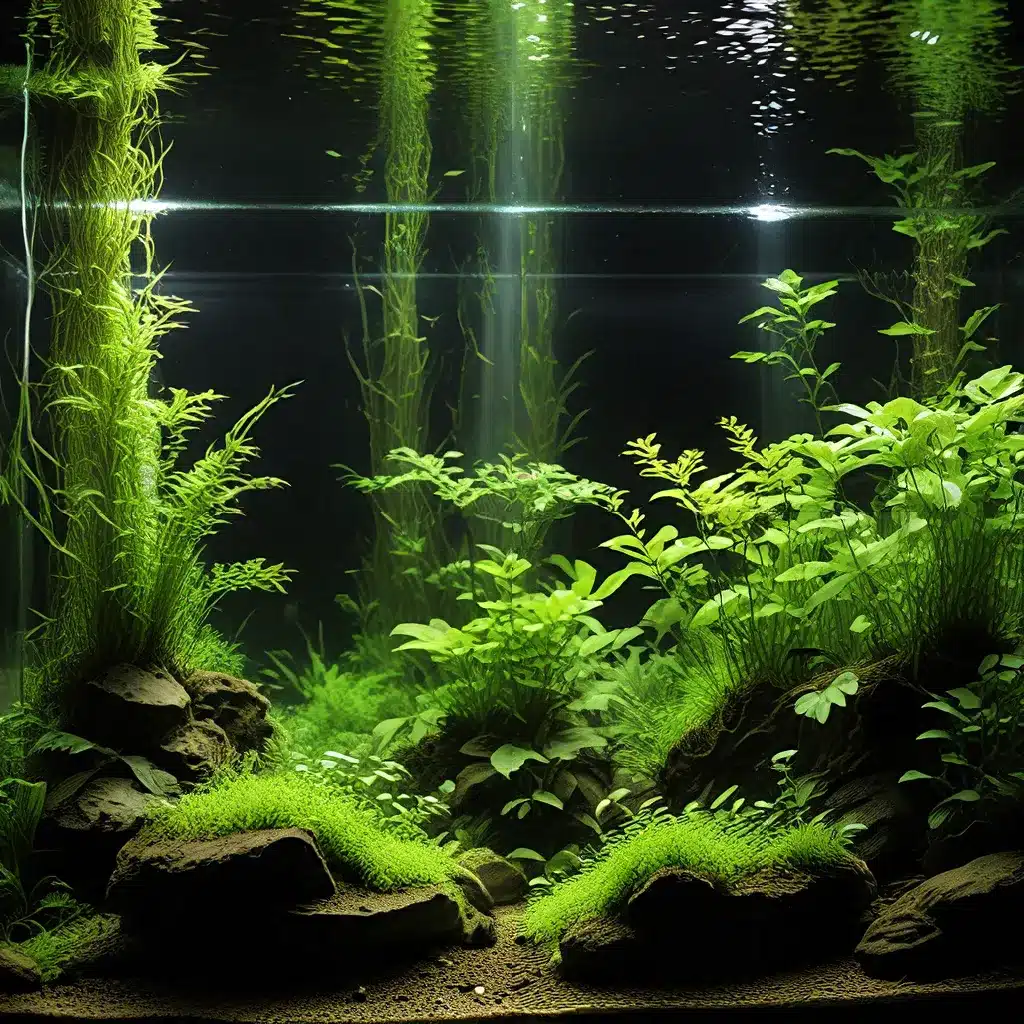
Understanding the Role of Light in Aquarium Planted Tanks
Lighting is a crucial component in creating a thriving aquarium planted tank. The right balance of illumination can mean the difference between lush, vibrant plant growth and a struggling, algae-ridden ecosystem. As aquarists, understanding the principles of Photosynthetically Active Radiation (PAR) and how it affects our underwater gardens is essential for achieving success.
PAR measures the specific spectrum of light that aquatic plants and corals utilize for photosynthesis, typically ranging from 400 to 700 nanometers. By closely monitoring and adjusting the PAR levels in our tanks, we can ensure that our plants receive the optimal amount of light to thrive.
Low-light aquarium plants, such as Anubias and Java Fern, typically require a PAR range of 50 to 150, while more light-demanding species like Acropora corals and high-tech carpet plants need a PAR level between 200 and 400. Striking the right balance is crucial, as both excessive and insufficient light can have detrimental effects on the health and growth of our underwater flora.
Choosing the Ideal Lighting System
When it comes to selecting the appropriate lighting for our planted aquariums, there are several factors to consider. LED lights have become increasingly popular due to their energy efficiency, programmability, and ability to deliver a full spectrum of light suitable for plant growth.
By understanding the specific needs of the plants we wish to cultivate, we can tailor our lighting systems to provide the optimal PAR levels. For example, a low-light tank may only require a moderate LED setup, while a high-light aquarium might benefit from a more powerful and adjustable lighting solution.
Regularly testing the PAR levels at various depths and locations within the tank is essential for ensuring that all areas receive adequate illumination. This data can then be used to fine-tune the light intensity and duration, creating the perfect balance for our underwater oasis.
Balancing Nutrients and Carbon for Optimal Plant Growth
While lighting is a crucial element in the success of a planted tank, it is not the only factor that contributes to lush, vibrant plant growth. Providing the right balance of nutrients and carbon sources is equally important, especially in low-tech setups where CO2 injection may not be feasible.
In these types of aquariums, aquarists can leverage natural sources of CO2, such as fish respiration and organic matter decomposition, to support plant growth. Supplementing with liquid carbon additives can also be an effective way to boost carbon availability without the complexity of a dedicated CO2 system.
Additionally, a nutrient-rich substrate can provide a steady supply of essential minerals and compounds that plants require for healthy development. Carefully monitoring and adjusting water parameters, including pH, hardness, and nutrient levels, can help compensate for the slower growth rates often associated with low-tech planted tanks.
Incorporating Beneficial Fauna and Maintenance Routines
The introduction of compatible fish and invertebrates can further enhance the health and aesthetics of a planted aquarium. Certain species, such as small schooling fish and freshwater shrimp, can aid in maintaining the tank by consuming excess algae and detritus, keeping the plants clean and thriving.
Establishing a consistent maintenance routine is crucial for the long-term success of any planted tank, regardless of the lighting and CO2 setup. This includes regular water changes, substrate agitation, and plant trimming to encourage horizontal growth and prevent shading. By staying vigilant and making timely adjustments, we can create a harmonious and visually stunning underwater landscape.
Exploring Inspirational Low-Tech Planted Tank Setups
The King Aquarium community is home to a wealth of inspiration when it comes to cultivating lush, low-tech planted tanks. Aquarists have showcased their creativity and expertise in crafting captivating aquascapes that thrive without the need for complex CO2 systems or high-intensity lighting.
By studying these real-world examples and learning from the experiences of fellow enthusiasts, we can gain valuable insights into the strategies and techniques that have proven successful in growing a diverse array of carpeting plants, mid-ground foliage, and background accents – all while maintaining a stable, balanced ecosystem.
Navigating the complexities of aquarium planted tank lighting can seem daunting, but with a solid understanding of PAR, nutrient management, and maintenance best practices, we can unlock the true potential of our underwater gardens. Whether you’re a seasoned aquarist or a beginner exploring the world of planted tanks, the knowledge and inspiration found in this guide can help you create a thriving, low-tech aquatic oasis that captivates the eye and nourishes the soul.
Conclusion
Mastering the art of planted tank lighting is a journey of discovery and experimentation. By leveraging the insights and strategies outlined in this article, aquarists can unlock the true potential of their underwater gardens, cultivating lush, vibrant ecosystems that thrive without the need for complex equipment or intensive maintenance.
Whether you’re a seasoned enthusiast or a newcomer to the hobby, embracing the principles of PAR, nutrient management, and beneficial fauna can help you create a stunning, low-tech planted tank that captures the natural beauty of the aquatic world. By staying informed, adaptable, and committed to regular care and maintenance, you can transform your aquarium into a sanctuary of life, beauty, and tranquility.
So, dive in, explore the possibilities, and let your planted tank flourish under the perfect balance of illumination and care. The rewards of a thriving, low-tech aquatic paradise await.

